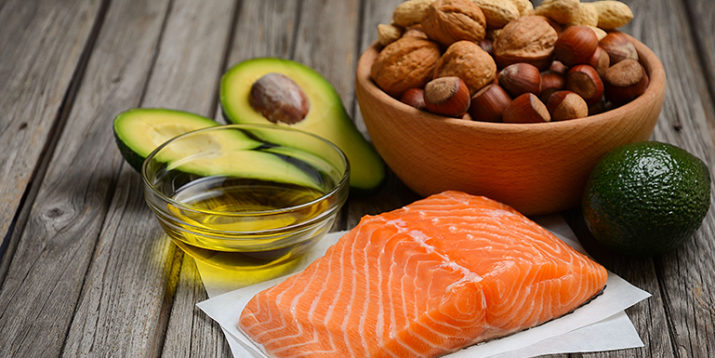Should You Eat Differently When You’re Injured?

Runner’s knee. Swimmer’s shoulder. Tennis elbow. It sucks when the very thing you do to stay fit causes an injury that sidelines you for a while and threatens your fitness. Unfortunately, statistics tell us the occasional breakdown is all but inevitable for those who engage in regular, vigorous exercise. For example, a recent scientific review by Danish researchers reported that the typical recreational runner suffers 7.7 injuries per 1,000 hours of running. That works out to about one injury per year for a runner who logs three hours a week.
If you’re like many athletes and exercisers, one of the first thoughts you have after suffering an injury might be: Oh no, I’m going to gain weight! Injuries often result in reduced activity levels, after all, and reduced activity levels often result in weight gain. This was shown in a 2016 study published in the Journal of Sport Sciences. Spanish researchers found that competitive cyclists gained an average of 3.75 pounds when they stopped training for five weeks.
Injuries are not an automatic ticket to weight gain, however. A simple dietary shift — and not one you might expect — can keep you lean while you heal, and set you up to hit the ground running (so to speak) when you’re able to run (or swim or play tennis or work out in your living room) again.
How to Adjust Your Diet If You’re Injured
The obvious way to prevent injury-related weight gain is to eat less of what you already eat, but for most people this is easier said than done because appetite doesn’t necessarily decrease right away when you lower activity levels. Few of us can muster the willpower to eat less than enough to satisfy our hunger day after day.
A more realistic way to prevent weight gain is to adjust what you eat. Specifically, try eating more protein. High-protein diets have been shown to satisfy people’s appetites with fewer calories, and to increase resting metabolism. A 2005 study by researchers at the University of Washington Medical School found that overweight women voluntarily consumed 441 fewer calories per day on average when their protein intakes were elevated to 30% of total calories, despite making no conscious effort to eat less. That’s the calorie equivalent of four miles of running for a 150-pound individual.
Healthy sources of extra protein include fish, poultry, eggs, dairy, and tempeh, among others (check out your preferred BODi program’s nutrition guide for more protein suggestions and this collection of high-protein breakfasts for some ideas).
An Example Day on a 30% Protein Diet:
Breakfast
- Three-egg omelet with spinach and cheese
- Coffee
Snack
- Shakeology or smoothie with yogurt, banana, strawberries, and protein powder.
Lunch
- Chicken Caesar salad
- Water or unsweetened iced tea
Snack
- Dry roasted cashews
Dinner
- Salmon with quinoa and snow peas
- Sparkling water with lemon
Are There Foods That Are Best for Recovery?
If a simple diet change can keep you from gaining weight when you’re injured, can other nutritional tweaks help you heal faster? Don’t bet on it.
Sports medicine physicians such as Jordan Metzl, M.D., a sports medicine physician at the Hospital for Special Surgery in New York City and author of The Athlete’s Book of Home Remedies rarely advise patients to eat specific foods or take particular supplements to accelerate injury healing. The reason is simple. “I don’t think there’s any convincing proof that nutrition can affect healing time,” Metzl says.
Injury healing is something the body does automatically on its own schedule. While it is true that diet provides the raw materials (protein, vitamins A and C, and zinc being among them) that the body uses for healing, you’ll get what you need if you stick to a balanced diet with sufficient calories (to maintain your weight).
An imbalanced or low-quality diet is likely to be deficient in one or more nutrients that are critical to injury recovery. But the same balanced, natural diet that is optimal for all-around health when you’re uninjured is also best when you’re rehabbing. Don’t know what a “balanced, natural diet” is? Start with the USDA’s MyPlate guidelines.
If your diet is already balanced and based on natural foods and you want to go for something next-level, try increasing your consumption of foods known for their anti-inflammatory effects. Inflammation is a normal part of the healing process, but it has a way of getting out of hand, and that is why conventional injury treatments — icing, elevation, medication — are aimed at tamping it down. Eating anti-inflammatory foods will complement these measures and may move the healing process along just a bit faster, though there is no published evidence that this is the case.
Here are some of the top anti-inflammatory foods, according to the Harvard School of Public Health:
- Tomatoes
- Olive oil
- Green, leafy vegetables
- Nuts
- Fatty fish
- Fruit
Can a Healthy Diet Help Prevent Future Injuries?
While diet may have little power to accelerate injury healing, it has a big impact on the likelihood of getting injured in the first place. For example, a 2010 study reported that female runners who consumed recommended amounts of dairy were less likely to develop stress fractures.
